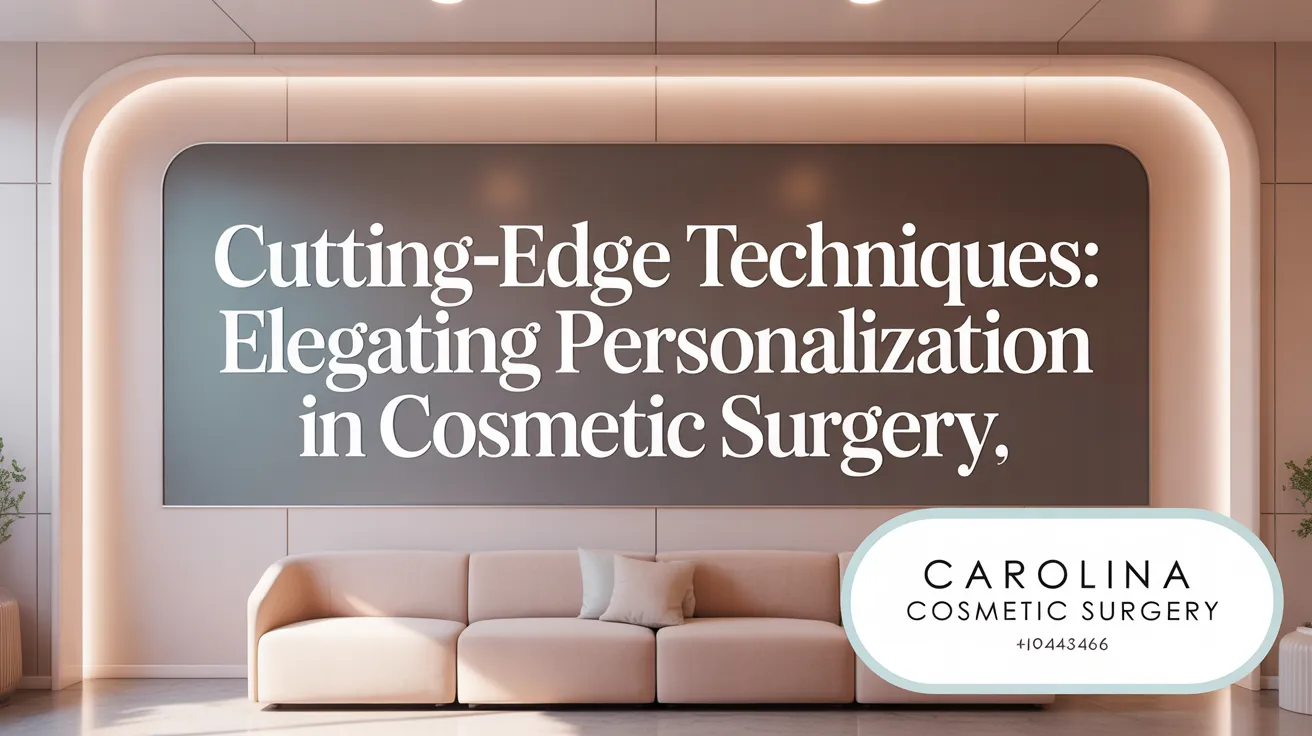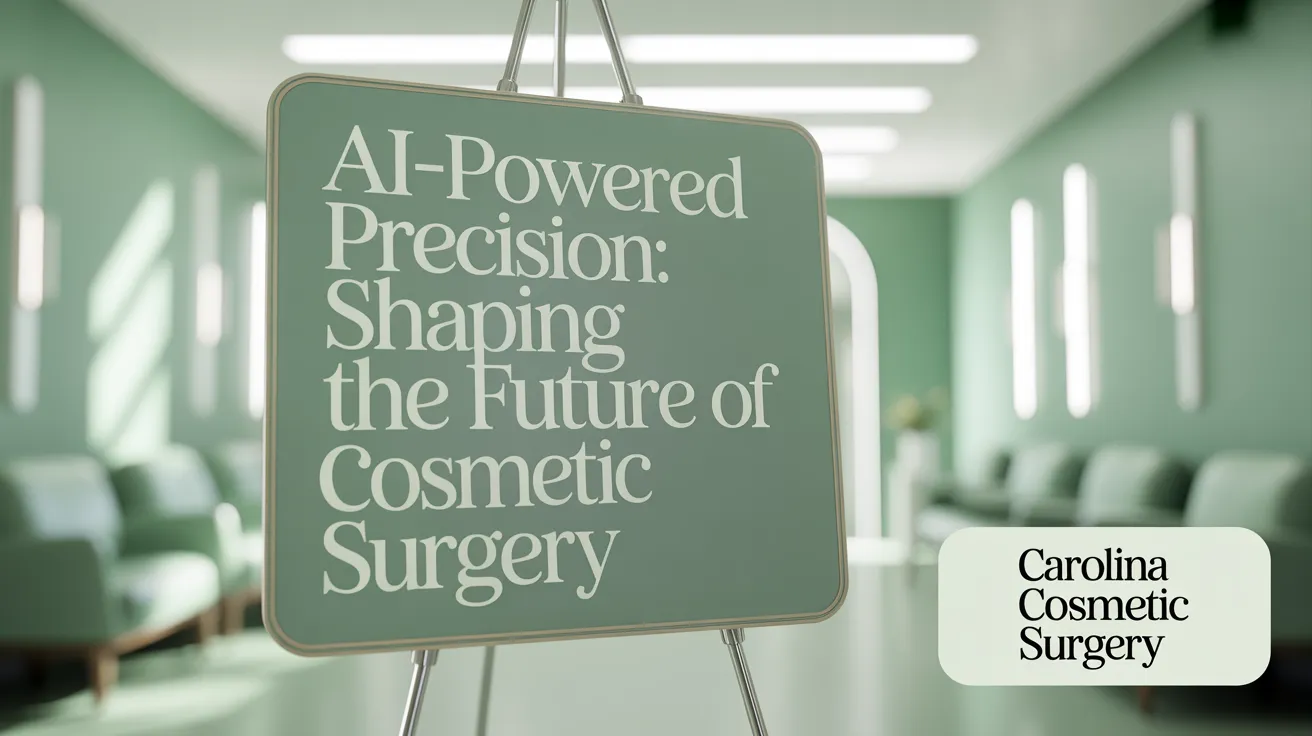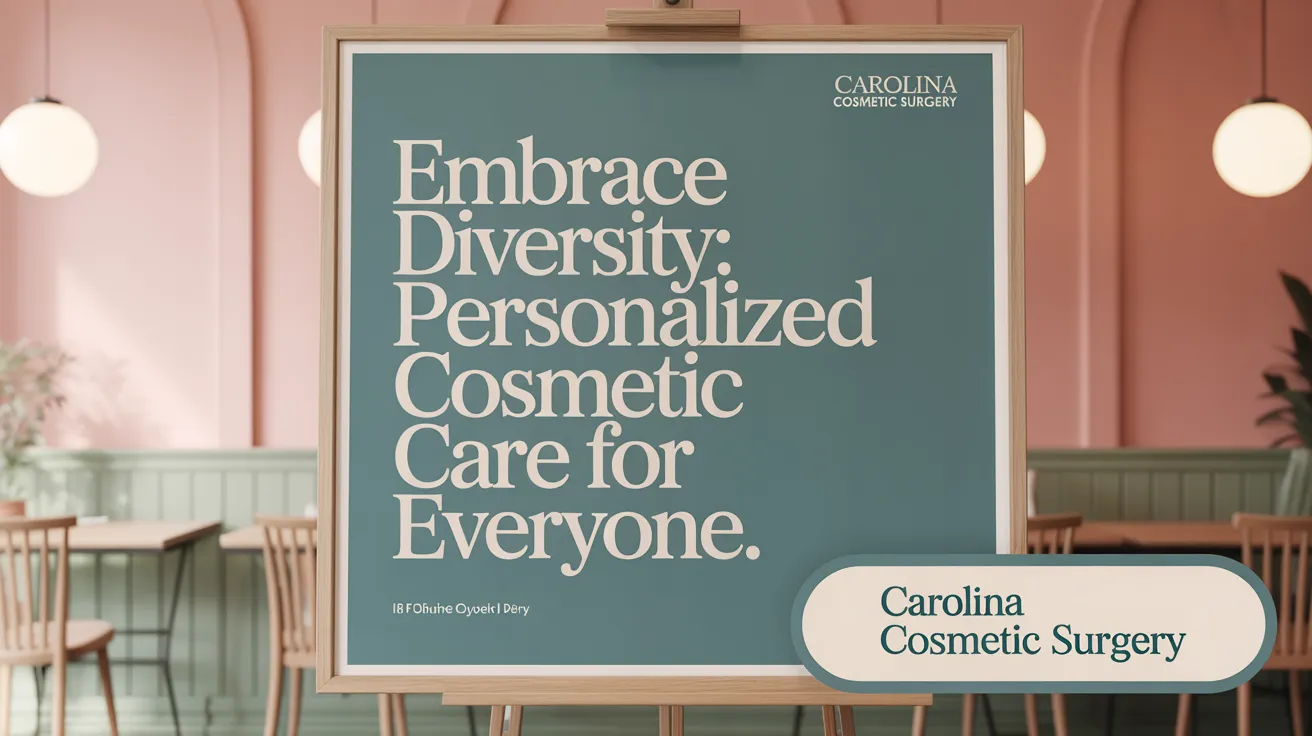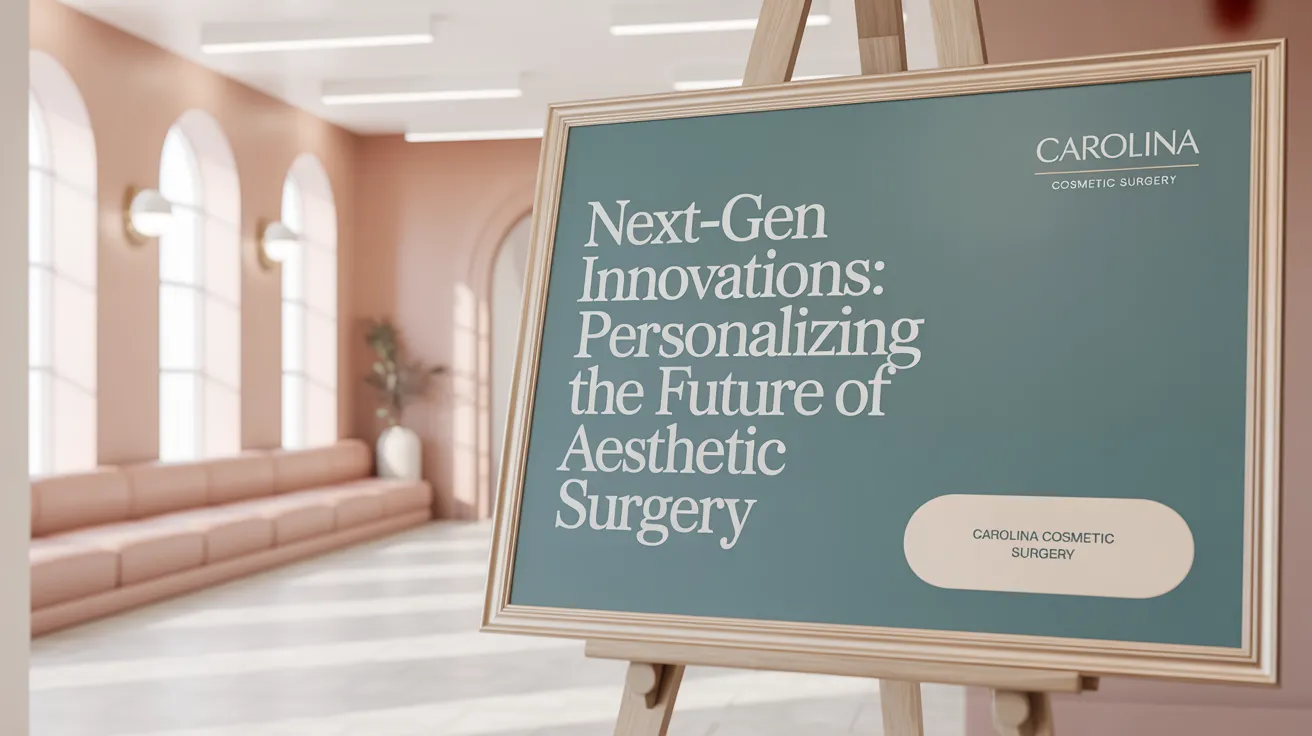Embracing Individuality in Cosmetic Surgery
Cosmetic surgery has evolved far beyond one-size-fits-all procedures. Today’s advancements enable surgeons to design personalized treatment plans that honor each patient's distinct anatomy, aesthetic goals, and lifestyle. By integrating cutting-edge technology, expert consultation, and tailored surgical techniques, personalized cosmetic surgery aims to deliver natural, harmonious results that enhance unique features rather than standardizing beauty. This article explores how modern practitioners approach customization, the role of artificial intelligence, technological innovations, and the significance of diversity and inclusion in crafting individualized cosmetic surgery plans tailored to unique needs.
<!-- VIDEO:eyJsaW5rIjoiaHR0cHM6Ly93d3cueW91dHViZS5jb20vd2F0Y2g/dj0tODIzMUVla3NZQSIsImltYWdlVXJsIjoiaHR0cHM6Ly9lbmNyeXB0ZWQtdGJuMC5nc3RhdGljLmNvbS9pbWFnZXM/cT10Ym46QU5kOUdjUVQ0OFBDTmZLOEViUWw0RDVfYXhUYjQwZ3NFZ2QtZ3BZdXFpRVd1RXJqZ0JEaCZzIiwidGl0bGUiOiJZb3VyIFVuaXF1ZSBUcmVhdG1lbnQgUGxhbjogSG93IFdlIFRhaWxvciBhIENvc21ldGljIC4uLiIsInNuaXBwZXQiOiJiZWF1dHkgaXMgdW5pcXVlLiBUaGF0J3Mgd2h5IHdlJ3JlIGRlZGljYXRlZCB0byBjcmVhdGluZyBhIHBlcnNvbmFsaXplZCBjb3NtZXRpYyBzdXJnZXJ5IHBsYW4gdGFpbG9yZWQgc3BlY2lmaWNhbGx5IHRvIHlvdXIgYm9keSwgbmVlZHMgLi4uIn0= -->The Art and Science of Personalized Cosmetic Surgery Planning

How do surgeons customize surgical plans to fit individual anatomy and goals?
A successful cosmetic surgery begins with a deep understanding of the patient's unique features and aspirations. Surgeons like Dr. John Alspaugh and Dr. Jack Hua adapt each procedure—whether it's breast augmentation, rhinoplasty, tummy tuck, or body contouring—to match the patient's specific body type, facial structure, and desired outcome. They adjust implant size, shape, and type, or tailor the surgical approach to enhance natural proportions. Advanced tools like 3D imaging and AI technology allow for detailed visualization and precise planning.
Many modern procedures incorporate a personalized approach, focusing on creating harmonious, natural results that suit the individual’s lifestyle, age, and health status. This customized mindset ensures that every aspect—from surgical technique to post-surgical care—is designed to promote safety, satisfaction, and an authentic enhancement of personal features.
What does the consultation and data gathering process involve?
The journey to a personalized outcome begins with a comprehensive consultation. During this phase, specialists collect extensive data, including medical history, skin condition, facial and body measurements, and patient goals. AI tools, such as Visage AI and SkinAI, are utilized to analyze facial features and skin conditions, providing insights that guide treatment planning.
This process involves active dialogue, where patients share their concerns and expectations. Visualizations via AI imaging software help patients see potential results, fostering clear communication and realistic goal setting. The combination of detailed data collection and patient input results in a tailored treatment plan that encompasses various procedures, from surgical interventions to non-invasive treatments.
How are treatments tailored to enhance natural features?
The essence of personalized aesthetic surgery lies in emphasizing the patient’s natural beauty rather than imposing drastic changes. Surgeons meticulously customize each procedure—whether it’s a face lift, breast augmentation, or body contouring—to align with the individual's anatomy, skin type, and aesthetic preferences.
Post-surgery, care plans are also personalized, addressing recovery needs, activity levels, and ongoing skin care. By considering factors like age, lifestyle, and genetic predispositions, clinicians craft strategies that support optimal healing and long-term results.
Overview Table of Personalization Aspects in Cosmetic Surgery
| Aspect | Description | Technology/Tools Used |
|---|---|---|
| Anatomical assessment | Evaluating body and facial structure | 3D imaging, AI facial analysis |
| Goal setting | Understanding patient’s desired results | Patient interviews, visualization software |
| Procedure customization | Adjusting surgical techniques and implants | AI data analysis, surgical planning software |
| Post-op care | Tailored recovery plan | Individual health factors, ongoing monitoring |
Personalized cosmetic surgery integrates these considerations, ensuring that treatments are aligned with each patient’s unique characteristics. This approach not only improves aesthetic outcomes but also enhances safety, efficiency, and overall satisfaction.
Innovative Techniques and Technologies Empowering Customization

What are the key techniques and technologies used in designing personalized cosmetic surgery plans?
Modern cosmetic surgery heavily relies on advanced tools and methods to create highly individualized treatment plans. One of the most significant innovations is the use of 3D imaging and modeling. These technologies enable surgeons to visualize a patient’s anatomy in three dimensions, allowing precise planning and realistic simulation of the expected results before surgery begins.
Artificial intelligence (AI) and machine learning also play crucial roles. By analyzing large datasets—including patient medical histories, genetic factors, skin types, and aesthetic preferences—AI helps predict how a patient’s body will respond to various procedures. It can identify potential risks, suggest the most suitable surgical options, and even simulate post-operative outcomes.
Minimally invasive techniques are increasingly incorporated into personalized plans. These methods, like small incisions, Botox, and fillers, minimize recovery time while providing customized enhancements tailored to each patient’s features.
Regenerative medicine approaches, such as fat grafting, are also utilized. This technique involves transferring a patient’s own fat tissue for natural volume restoration, offering a personalized solution that matches the individual’s body and aesthetic goals.
Furthermore, AI-powered predictive analytics support real-time intraoperative adjustments, boosting surgical precision during procedures. Real-time feedback enables surgeons to modify their approach instantaneously, ensuring outcomes are aligned with the planned results.
In summary, the combination of 3D imaging, AI analytics, minimally invasive techniques, and regenerative methods enables a highly tailored approach to cosmetic surgery. These innovations not only enhance safety and natural-looking outcomes but also improve patient satisfaction by addressing individual needs and expectations.
| Technology/Technique | Functionality | Benefit |
|---|---|---|
| 3D Imaging and Modeling | Visualizing anatomy & simulating outcomes | Precise surgical planning & realistic expectation management |
| AI-driven Analytics | Data analysis & predictive response modeling | Customized procedures, risk reduction |
| Minimally Invasive Techniques | Small incisions & non-invasive procedures | Reduced downtime & natural results |
| Regenerative Medicine (Fat Grafting) | Natural volume restoration | Personalized enhancement & tissue integration |
| Real-time Surgical Feedback | Intraoperative adjustments | Higher accuracy & satisfaction |
Advanced technologies in personalized cosmetic surgery are transforming patient care. They offer the ability to craft treatments that are specifically tailored to each person's unique anatomy, goals, and medical background, resulting in safer procedures and more natural, harmonious results.
Integrating Artificial Intelligence to Revolutionize Personalization

How is artificial intelligence integrated into developing personalized cosmetic surgery treatment plans?
Artificial intelligence (AI) plays a transformative role in customizing cosmetic surgery plans by extensively analyzing individual patient data. This includes medical history, genetic information, skin type, facial features, and personal goals. Using these details, AI models help generate surgical strategies that are tailored specifically to each patient’s anatomy and aesthetic desires.
Advanced tools like 3D imaging and virtual simulations enable surgeons to visualize potential results before any procedure begins. These technologies create realistic previews of post-surgical appearances and allow patients to see different options, fostering better understanding and setting realistic expectations.
AI algorithms also assist in predicting potential risks and complications. By analyzing large datasets from previous surgeries, AI identifies patterns to foresee outcomes and recommend modifications that minimize uncertainties.
During the procedure, AI-powered systems, including robotic assistants and real-time analytics, help surgeons execute treatments with high precision. These tools offer instant feedback, ensuring that adjustments can be made on the spot for optimal results.
Furthermore, predictive analytics evaluate how a patient may respond to certain procedures, balancing aesthetic goals with safety concerns. Explainable AI techniques provide transparency, explaining how conclusions are reached, which helps build trust and confidence.
In essence, AI enhances every stage of the personalized treatment process—from initial assessment through surgical execution and follow-up—making cosmetic surgeries safer, more precise, and closely tailored to individual needs.
Championing Diversity and Safety Through Individualized Care
 Personalized approaches in cosmetic surgery play a vital role in honoring diversity and ensuring safety for all patients. Recognizing the unique cultural and ethnic aesthetic preferences of each individual allows surgeons to create results that are both beautiful and meaningful to the patient. This tailored planning respects diverse beauty standards and avoids imposing one-size-fits-all norms, fostering outcomes that align with each person’s background and identity.
Personalized approaches in cosmetic surgery play a vital role in honoring diversity and ensuring safety for all patients. Recognizing the unique cultural and ethnic aesthetic preferences of each individual allows surgeons to create results that are both beautiful and meaningful to the patient. This tailored planning respects diverse beauty standards and avoids imposing one-size-fits-all norms, fostering outcomes that align with each person’s background and identity.
Diversity and inclusivity are crucial because they help address the varying perceptions of attractiveness across different cultures and communities. Surgeons incorporate this awareness into treatment plans, adjusting techniques, implant choices, and aesthetic goals accordingly. Such sensitivity enhances patient trust, comfort, and satisfaction, as patients feel seen and respected.
Moreover, customizing treatments based on personal, cultural, and demographic factors contributes to safer procedures. It ensures that surgical methods and healing expectations are aligned with individual needs, reducing risks and improving recovery outcomes.
This personalized care extends to serving a broad demographic, including male patients and diverse ethnic groups. For example, procedures like gynecomastia surgery or high-definition liposuction are adapted to meet specific male aesthetic goals. By paying attention to these differences, surgeons provide safer, more effective care tailored to each patient's characteristics.
Ultimately, embracing diversity and individualized strategies in cosmetic surgery enhances not only patient satisfaction but also promotes equity in access to innovative, culturally sensitive care. It fosters an environment where beauty is celebrated in all its forms, and safety is prioritized through meticulous, customized planning.
| Aspect | Focus | Benefit |
|---|---|---|
| Cultural sensitivity | Respect for ethnic features and preferences | More meaningful, acceptable outcomes |
| Demographic considerations | Tailoring to age, gender, ethnicity | Increased safety, satisfaction |
| Patient-centered planning | Comprehensive assessment & customization | Reduced risks, better healing |
| Diversity in practice | Inclusive workforce & patient options | Broader access, innovative solutions |
Future Horizons: Personalized Cosmetic Surgery Advancements

What are the future perspectives on personalized treatment plans in plastic and facial surgery?
The future of cosmetic surgery is set to become even more personalized thanks to technological advances like artificial intelligence (AI), machine learning, and innovative imaging techniques. These tools will allow surgeons to tailor procedures with unprecedented accuracy, ensuring results that match each patient's unique features and goals.
AI will play a significant role across all stages of treatment. From analyzing genetic information and skin conditions during consultations to predicting possible complications and tracking recovery with wearable devices, AI will help create safer and more effective plans. Surgeons will be able to simulate outcomes before surgery, giving patients a clear picture of their potential results.
Robotic assistance and minimally invasive methods will make procedures less invasive, reducing healing times and scarring while maintaining natural, harmonious results. At the same time, 3D printing will enable the creation of highly customized implants and surgical guides, tailored precisely to individual anatomy and aesthetic desires.
Visualizing surgical outcomes will become easier with advanced software, allowing patients to see simulated results in detail. This helps both surgeon and patient to refine treatment plans and manage expectations more effectively.
Future developments also include the integration of regenerative medicine techniques, offering possibilities like enhanced tissue growth and improved healing. Continuous monitoring tools, such as health wearables, will further support post-operative care, ensuring optimal recovery.
Overall, these trends aim to deliver natural, balanced cosmetic outcomes that respect each person's distinct features and lifestyle. They mark a shift towards safer, more efficient, and highly personalized treatments that prioritize patient satisfaction and well-being.
| Innovation Area | Impact | Additional Details |
|---|---|---|
| AI and Machine Learning | Enhance planning, predictions, customizing care | Includes genetic analysis, risk assessment, real-time adjustments |
| 3D Printing | Creating custom implants, surgical guides | Enables precise fits, visualizations |
| Robotic & Minimally Invasive Surgery | Reduce downtime, scarring, improve precision | Suitable for both facial and body procedures |
| Continuous Monitoring & Regenerative Medicine | Better recovery, tissue enhancement | Use of wearable devices and tissue engineering |
| Visualization & Simulation Tools | Improve patient understanding and planning | 3D imaging, AI-driven outcome simulations |
The ongoing evolution in personalized cosmetic surgery promises to bring about safer, more effective, and more natural results, aligning strongly with individual needs and preferences.
Personalized Cosmetic Surgery: A Patient-Centered Revolution
The landscape of cosmetic surgery is transforming towards fully individualized care, driven by technological innovations and a deep respect for patient uniqueness. Through detailed consultations, incorporation of AI analytics, and diverse surgical techniques, personalized plans prioritize natural harmony, safety, and holistic well-being. As diversity and inclusivity become integral to practice, and emerging technologies like genetic profiling and robotic assistance gain traction, patients can expect even greater precision and satisfaction. Designing personalized cosmetic surgery plans is not only about altering appearance—it is about crafting confidence and celebrating unique beauty in its many forms, shaping the future of aesthetic medicine.
References
- Customizing Your Cosmetic Surgery: Tailoring Procedures ...
- AI in Aesthetics: Personalized Treatment Plans
- Tailored Personalization in Plastic Surgery
- Designer Plastic Surgery
- Personalized Aesthetic Treatments for Best Results
- The Rise of Personalized Surgery: Customizing It for the ...
- Cosmetic Surgery and the Diversity of Cultural and Ethnic ...
- Embracing diversity in plastic surgery
